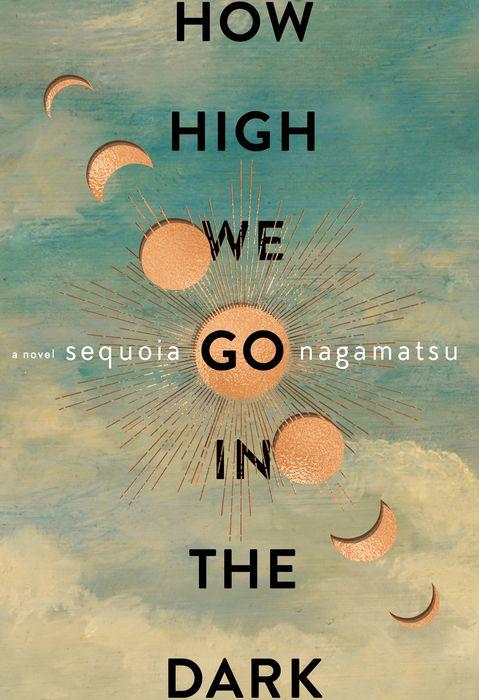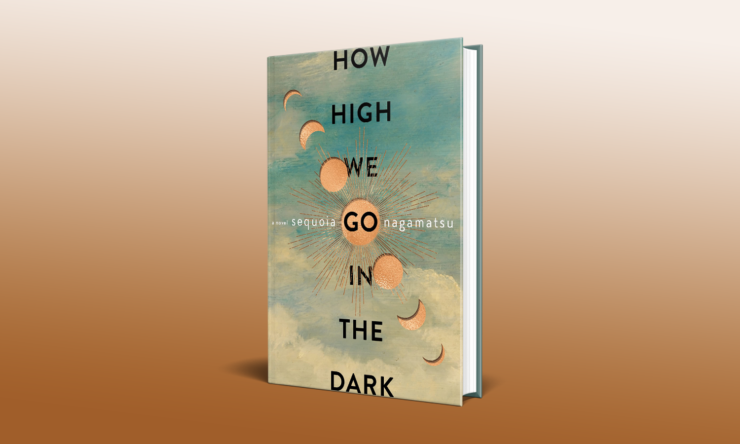What makes for essential pandemic fiction? This is a question that’s been on my mind for a substantial portion of the last two years. Early in the current pandemic, I shared some thoughts on the subject; since then, the pandemic-lit canon has expanded and deepened. Consider the acclaimed adaptation of Emily St. John Mandel’s Station Eleven or the new translation of Mario Bellatin’s Beauty Salon published in late 2021. There’s something both compelling and disconcerting about experiencing stories about a pandemic from within a pandemic. That’s a sensation that Sequoia Nagamatsu memorably captures in his new novel How High We Go in the Dark.
One could call Nagamatsu’s book a mosaic novel or novel-in-stories largely set over the course of several years, over the course of which something known as “the Arctic plague” devastates the planet. At times, this is a movingly lived-in story about grief, focusing in many parts on people whose lives intersect with the pandemic but are not themselves infected with it. But that’s not entirely accurate; Nagamatsu’s novel also has bold and metaphysical streak, which ultimately takes the narrative to some unexpected places.
How High We Go in the Dark begins in Siberia in the very near future. Cliff Miyashiro, an expert in evolutionary genetics and archaeology, has arrived at a research site that one of the scientists working there describes as “the end of the world.” His reason for being there is not a happy one: His daughter Clara recently died on the site after discovering a 30,000-year-old body.
Buy the Book


How High We Go in the Dark
Slowly, things get weird. Chief among them is the body in question, which further studies determine is “[p]art Neanderthal and part something only superficially human,” including “genetic traits similar to that of a starfish or octopus.” And while that’s intriguing, it’s not the scientists’ biggest concern. That distinction falls to the virus found in the body, which has an alarming effect on amoebas and seems to be spreading to the human researchers.
“It’s like the virus is interrupting the host cells to serve other functions, like a chameleon—brain cells in the liver, lung cells in the heart,” one of Cliff’s colleagues tells him. “Eventually, normal organ function shuts down.” Things get worse at the dig; Cliff’s own health begins to decline. And then the novel moves on; by this point, the pandemic has gone global, affecting mostly children, and our next narrator is a struggling comedian who gets a job at what’s dubbed a “euthanasia park,” where terminally ill kids with the pandemic go to die.
This is as good a time as any to say that How High We Go in the Dark is often brutally sad to read. And if the amusement park that euthanizes children doesn’t give that away, the chapter about a man working to repair broken robot dogs probably will. And if that doesn’t, the one about a pig bred for organ transplants that develops sentience definitely will. Before reading this book, I did not think that I could have my heart broken by the story of a swine named Snortorious P.I.G. It turns out that I was very, very wrong.
Nagamatsu alludes to other pandemics over the course of the novel as well. The chapter “Elegy Hotel,” which deals with the rising corporatization of death—Nagamatsu mentions Jessica Mitford’s The American Way of Death in the book’s acknowledgements—is especially telling in this respect. There are several allusions to the 1980s there, including discussion of Starship’s archetypally mid-80s album Knee Deep in the Hoopla.
It’s a subtle nod to the period in which AIDS gradually became more and more prominent in the public eye. And while the pandemic in this novel is very different from that very real pandemic in many ways, there are a number of areas of overlap—notably, some of the methods of transmission. Norman Spinrad’s Journals of the Plague Years is one of two books with which this would make an excellent double feature. (More on that in a moment.)
Over the course of the novel, then, we start to see society as a whole begin to bring this new pandemic under control. It’s one of several things that keeps How High We Go in the Dark from feeling like an endurance test. The book is harrowingly sad in places, for sure—but there’s also room for hope, and the ways in which it gradually turns is one of its most deft maneuvers.
That sense of pacing is one of several ways in which the full scope of Nagamatu’s novel comes into focus. Another has to do with the first-person narrators guiding the reader through much of the book. If you pay close enough attention, you’ll start to see connections between the narrators of the book’s chapters. The wife and grandchild of the scientist narrating the first part, for instance, make an appearance later in the book in a very different context. Sometimes, this is also devastatingly sad; we can infer in passing from one chapter that the narrator of an earlier chapter, in perfect health at that time, has since met their end.
But for a novel that spends much of its time on creating a speculative yet lived-in sense of what a transformative pandemic might do to society, How High We Go in the Dark also takes a few turns into a more cosmic realm. And it’s here that the other novel that came to mind while reading this comes into focus: Chris Adrian’s The Children’s Hospital, which also centers around a pandemic, but takes that concept into a much more metaphysical place.
There’s a chapter called “Through the Garden of Memory” that addresses what it’s like to actually have the plague. The bulk of it, however, is set in a kind of collective psychic space where people affected by the disease have gathered. There’s no real explanation of what’s happening here—if it’s meant to be a kind of literal Purgatory, or if the effects of the plague have given these people a shared consciousness before their deaths. It feels like an outlier for much of the novel, until it reaches its conclusion and its place in the narrative becomes apparent.
But the explanation of what’s happening there, and the explanation for some of the other mysteries, adds a lot to the novel that didn’t always seem balanced. For me, the elements of How High We Go in the Dark that were the most moving were those focusing on human connection, that showed how the bonds of friends and family endure (or don’t) under impossible duress. The larger worldbuilding, though fascinating in its own right, took the narrative in some directions that warranted more exploration—but some of the shifts it took to get there were overly jarring. In the end, it’s the ground for hope that kept me rooted to this book, and the empathy with which Nagamatsu chronicled his characters’ struggles to persevere and persevere and persevere.
How High We Go in the Dark is available from William Morrow.
 Tobias Carroll is the managing editor of Vol.1 Brooklyn. He is the author of the short story collection Transitory (Civil Coping Mechanisms) and the novel Reel (Rare Bird Books).
Tobias Carroll is the managing editor of Vol.1 Brooklyn. He is the author of the short story collection Transitory (Civil Coping Mechanisms) and the novel Reel (Rare Bird Books).










